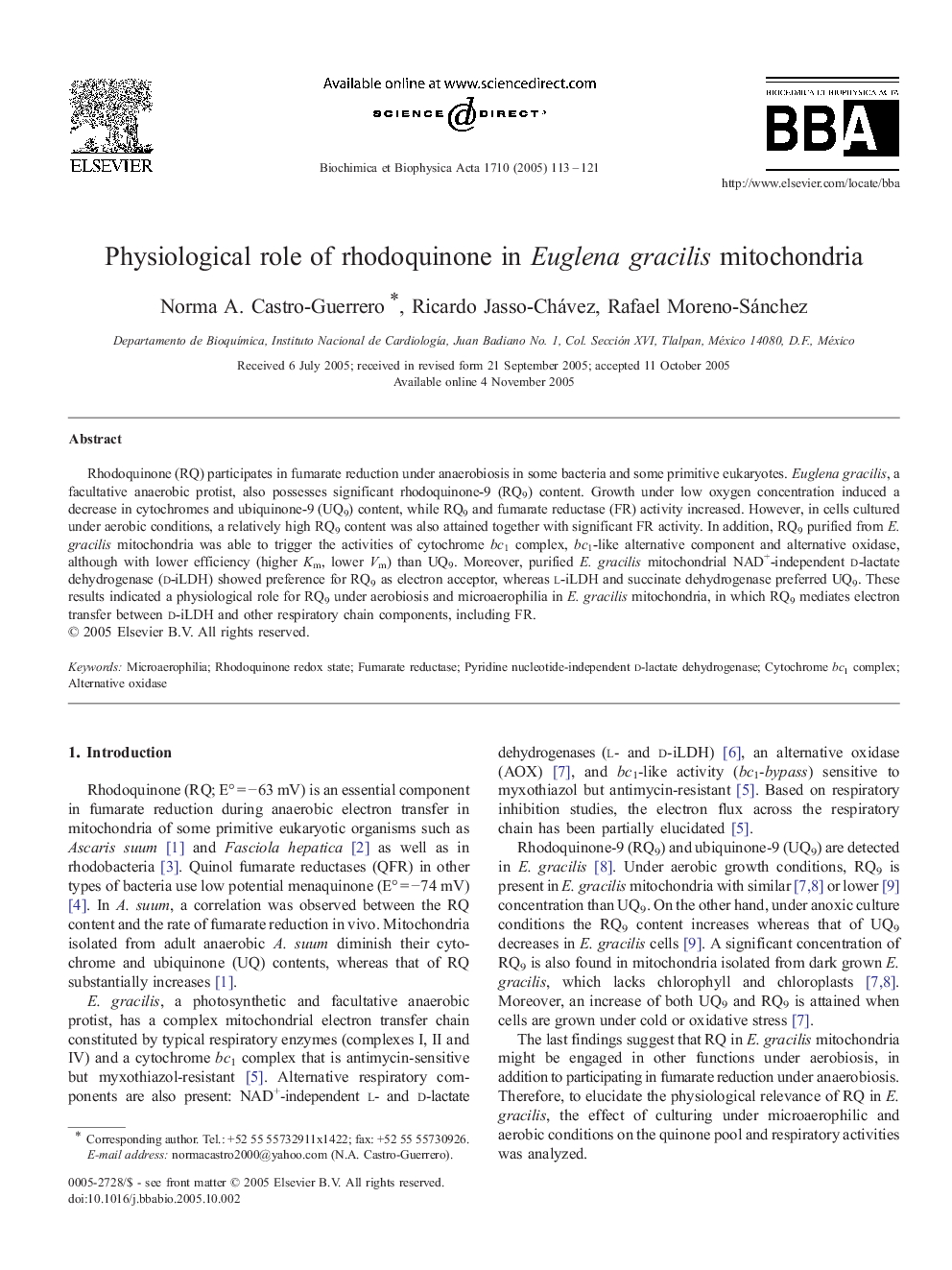| Article ID | Journal | Published Year | Pages | File Type |
|---|---|---|---|---|
| 9884688 | Biochimica et Biophysica Acta (BBA) - Bioenergetics | 2005 | 9 Pages |
Abstract
Rhodoquinone (RQ) participates in fumarate reduction under anaerobiosis in some bacteria and some primitive eukaryotes. Euglena gracilis, a facultative anaerobic protist, also possesses significant rhodoquinone-9 (RQ9) content. Growth under low oxygen concentration induced a decrease in cytochromes and ubiquinone-9 (UQ9) content, while RQ9 and fumarate reductase (FR) activity increased. However, in cells cultured under aerobic conditions, a relatively high RQ9 content was also attained together with significant FR activity. In addition, RQ9 purified from E. gracilis mitochondria was able to trigger the activities of cytochrome bc1 complex, bc1-like alternative component and alternative oxidase, although with lower efficiency (higher Km, lower Vm) than UQ9. Moreover, purified E. gracilis mitochondrial NAD+-independent d-lactate dehydrogenase (d-iLDH) showed preference for RQ9 as electron acceptor, whereas l-iLDH and succinate dehydrogenase preferred UQ9. These results indicated a physiological role for RQ9 under aerobiosis and microaerophilia in E. gracilis mitochondria, in which RQ9 mediates electron transfer between d-iLDH and other respiratory chain components, including FR.
Related Topics
Life Sciences
Agricultural and Biological Sciences
Plant Science
Authors
Norma A. Castro-Guerrero, Ricardo Jasso-Chávez, Rafael Moreno-Sánchez,
